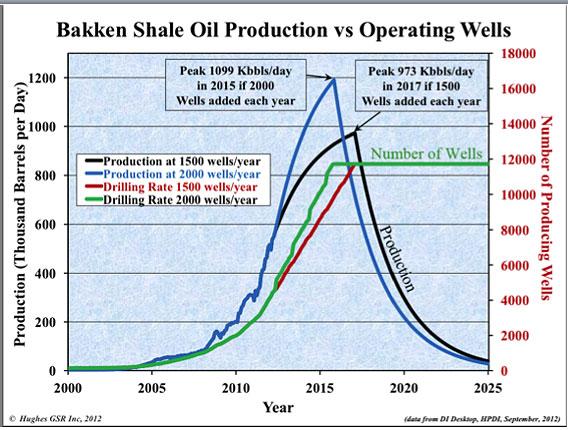Environment & Energy
Related: About this forumSlate - The Myth Of Saudi America & The Shale Oil "Miracle"
EDIT

There are certainly huge amounts of oil locked up in shale formations worldwide. In the United States alone, the Bakken and Eagle Ford shales contain up to 700 billion barrels, and the Green River shale under Colorado, Wyoming, and Utah has a whopping 2 trillion barrels. However, only a tiny fraction of this total is recoverable. For Bakken (in Montana and North Dakota) and Eagle Ford (in Texas), which account for most of the current surge in U.S. oil production, the estimated recoverable fraction ranges from 1 to 2 percent. Though all of these deposits are loosely referred to as “shale oil,” Bakken and Eagle Ford oil is more precisely called “tight oil,” because it is actual, fluid oil that is trapped in the pores of shale, and it can be liberated by fracturing the rock to allow the oil to flow. In contrast, the hydrocarbon in the Green River shale is not really oil at all but a waxy substance that must be cooked at around 500 degrees Celsius to turn it into flowing oil. The technology for extracting oil from deposits like the Green River shale is far more challenging than what is required to tap into tight oil, and it has never been profitably implemented at any significant scale. There is thus no credible estimate of how much oil can be recovered from the Green River formation.
At the high end of the estimates, predicted production from Bakken and Eagle Ford together amounts to perhaps a two-year oil supply for the United States at 2011 consumption rates. That's significant but not a game-changer. Even if it were to prove possible to achieve production rates comparable to those of Saudi Arabia, that would only mean that we would deplete the resource faster and bring on an oil crash sooner.
What would it take to ramp up production to such high levels? Technological developments have made it possible to tap into tight oil, but these are not the same kinds of technological developments that have given us ever more powerful computers and cellphones at ever declining prices. Oil production technology is giving us ever more expensive oil with ever diminishing returns for the ever increasing effort that needs to be invested. According to the statistics presented by J. David Hughes at the AGU session, we are now drilling 25,000 wells per year just to bring production back to the levels of the year 2000, when we were drilling only 5,000 wells per year. Worse, the days are long gone when you could stick a pitchfork in the ground and get a gusher that would produce for years. The new wells are expensive (on the order of $10 million each in the Bakken) but give out rapidly, as shown in the following figure from Hughes' talk illustrating the typical production curve.

Current total U.S. oil production is about 6 million barrels per day. By way of comparison, Saudi production is currently running at 9.5 million barrels per day. To exceed Saudi production, new oil from tight-oil sources would have to more than offset declining production from existing wells. It is clear that even if we do manage somehow to temporarily exceed Saudi production rates, the party is not going to last very long.
EDIT
http://www.slate.com/articles/health_and_science/science/2013/02/u_s_shale_oil_are_we_headed_to_a_new_era_of_oil_abundance.single.html